- quality of the glass from which prisms and lenses are made,
- skill of the craftsmen who prepare and assemble them,
- objective size,
- coatings on the optics, and
- the optical and physical alignment of the binocular's barrels.
Bird Watching Binoculars
MenuThere are two essentials for birding: good, quality bird watching binoculars and a field guide to birds for your area. We'll provide you with criteria to use in selecting binoculars for bird watching that will help you achieve an astounding level of close-up intimacy with birds.
Birders, by their demand for high quality binoculars, drive the optics industry to innovate and improve and enhance yesterday's optical performance. There is no other group for which detail is more important than to birders who need that detail to identify a bird. Those who use binoculars for other purposes owe a huge debt of gratitude to birders!
For birding binoculars, we find that there are some essential functional characteristics that run across all birders despite divergences in other areas. These characteristics are in order of priority.
-Quality of view - how clear, clean, and crisp is the view?
-Functionality - how easy is the binocular to use?
-Durability - how will it last with accidental dips in streams or the occasional rain shower, bumps against trees and branches, being dropped(?!), and seasonal climate changes?
-Some have argued that budgetary considerations should also play a role. Since each birder's budget is a blend of needs and priorities unique to the individual, it's not entirely fair to try to address something so personal in blanket fashion! Nonetheless, we'll try to offer general observations about budgeting for bird watching binoculars.
Quality of view
The factors which affect quality of view are considered at some length on the page about choosing binoculars. It is enough to say here that the major items affecting the quality of view are the
The shaping and polishing of glass components and application of coatings of uniform thickness to them involves exacting standards literally measured in millionths of an inch - and attention to quality at this level of detail is essential to good bird watching binoculars.
The highest quality images necessitate multi-element lenses for both the objectives and oculars. Saying it simply, the best binoculars have more glass and their glass is of a higher optical quality, which makes it correspondingly more expensive to put into a binocular. Each additional piece of glass involves more of the precision shaping and polishing before the highly skilled craftsman or woman precisely mounts the prisms and lenses in the binocular's frame in such a way as to withstand being knocked about from time to time.
As we think about choosing objective lens sizes we'll pause to note here that objectives as small as 25 or even 23mm can provide good images of birds in full daylight and at relatively close ranges of 50-75ft (15.2-22.9m). Lenses from the low to mid 30mm range will often prove satisfactory for general use. When you start moving into ranges around 100ft (30.5m)and more or lighting conditions which are not full daylight, you'll want to have objective lenses between 40 and 50mm. The larger lenses will provide more color, more color details, and better resolution which will enable you to identify birds more easily. Unfortunately, our eyes are not likely to recognize the limitations of the smaller objectives until we use them to view at longer distances and can compare them directly with the views provided by larger objectives. Finally, with smaller diameter objectives you'll not be able to see details in the areas of shadows - to see as deep into the shadows - as with larger objective lenses. Even when looking where there are sharply contrasting areas of lighting, you'll want to be able to see good detail in the shadowed areas as in the bright areas. When selecting bird watching binoculars you may want to keep in mind that forests typically have more shadows than plains and deserts provide.
While you'll certainly want to see distant images clearly, as a birder you'll also want your bird watching binoculars to have a good close focus to give you critical identifying details on nearby birds. You or your bird watching colleagues will know what prevailing conditions are in your area, but a distance of 10-12ft (3.0-3.7m) is usually acceptable. If you can get your bird watching binoculars to focus on birds or butterflies as close as 8ft (2.4m) or even closer, you may find yourself enjoying them even more.
Another element which affects quality of view in bird watching binoculars is the use of a sophisticated lens design which uses up to five separate lenses using very dense glasses (often referred to as "HD" for High Density, "ED" for Extra Density or Extra-low Dispersion, or "SD" for Special Dispersion). This is done to move the optics from achromatic to nearly apochromatic. What this does is to remove an element of chromatic aberration from the image. While the difference in the chromatic aberration is usually subtle, what the user often notices is an increased contrast due to the reduced blur at the edges of details. After using them a bit, you're likely to come to appreciate the observable differences between shades and hues which are much finer than an achromatic binocular can achieve.
Aspheric lenses will also provide a greater level of detail than spherical ones. A smaller binocular with aspheric lenses can perform as well or better than a larger binocular without them if all other considerations are equal.
Bird watching binoculars' two sets/barrels of optics must be both physically and optically aligned (collimated) to provide the birder with a good view. Without good collimation, the user will either find bird watching binoculars to be painful to use or will simply abandon bird watching - neither of which are desirable outcomes!
Functionality
Perhaps the first thing you'll notice when you hold a bird watching binocular for the first time is the weight. A half pound (quarter kilo) of weight in an instrument will definitely be noticeable on an active birding excursion by the time you're an hour or two into it. It is possible to adapt to a heavier birding binocular by using a wider, more padded neck strap or one of the increasingly popular binocular harnesses which go over the shoulders.
The second thing you're likely to note when you actually use birding binoculars is their balance. It's difficult to describe good balance except to say that light binoculars, let's say two pounds (one kilo), with poor balance can fatigue the arm muscles much more than bird watching binoculars weighing three pounds (one and a half kilos) when they're well balanced. The shape of a binocular and consequently the manner in which you grip it, how you're able to focus it, even the rubberized armoring and whether or not there are indents for your thumbs or accommodations for your fingers can make a significant difference in the way a binocular rests in the hands for a day of birding. While we comment on balance in reviews, it can be a bit subjective in relation to the size and strength of the user's hands as compared to the reviewers' and other considerations.
You're most likely to want your bird watching binoculars to have a fast focus using a central-focusing mechanism instead of individual focus eyepieces. This is simply because of the speed afforded by a central focusing mechanism. You should be able to go from as closely focused as possible to infinity with approximately a full revolution of the focusing wheel. We'll accept as much as one and a half revolutions of the focus wheel as reasonable, but feel it's pushing the boundries for a birder actively counting birds, trying to identify birds taking flight, or working a marsh full of birds. After spending a day of focusing and re-focusing, you'll note the difference between a fast and a slower focus at the end of the day!
The action of a central focusing adjustment wheel should be buttery-smooth and allow you to quickly and easily focus. Your finger should naturally and easily rest on the focus wheel of center focus binoculars when holding them up to your eyes. If it doesn't, you should actively consider other bird watching binoculars. In case it's suggested to you, the average birder finds the "rocker bar" provided on some binoculars to make focusing difficult.
If you're new to bird watching binoculars, you'll want to ensure that you've reviewed how to focus binoculars to get the best use from them.
For those of us who will be carrying bird watching binoculars while hiking, size and weight are functionality items. For everyday birding activities, most of us prefer mid-size (approximately a 32mm objective lens) or full-size (approximately a 42mm objective or greater) birding binoculars. It's noteworthy that some high-quality, mid-size optics are quite similar, optically, to comparable full-size models. Price comparisons between the two will usually find them costing about the same and a mid-size will be approximately 20% lighter than a full-size instrument on average.
Other functionality considerations include eye relief (important if you wear eyeglasses), interpupillary distance, field of view (birders usually enjoy an FOV between about 325 to 400 feet/109 to 134 meters with the wider generally being better for keeping moving birds in view), and magnification. Some question including magnification in the functionality category, however using a higher magnification in a forest is likely to produce greater strain over a day's activities in our experience than a higher magnification on the plains, desert, or in the mountains. A good quality 7X or 8X instrument is often better in densely wooded areas while a 10X may be quite usable otherwise. With high quality optics, however, the difference in observed details between an 8X and 10X instrument are much less than one would otherwise believe! (The key is the optical quality of the lenses and prisms.)
The majority of birders seem to enjoy a magnification of 8X or 8.5X. When coupled with good optical coatings, lens and prism materials, and objective lens size, these instruments can provide as much or more detail as more powerful, but lesser quality, birding binoculars. Below a 7X magnification, however, you're not likely to feel as though you're getting enough of an image to properly identify birds.
It needs noting here that many, if not most, binoculars designed and made for marine use (using aboard marine vessels) are generally too heavy and bulky for use as serious bird watching binoculars and quickly produce fatigue. You'll notice that users often stand with their elbows spread which, in combination with the fatigue, will increase minor hand tremors. Whether the hand tremors are minor or not doesn't make much difference as far as degrading the quality of your view!
Durability
If we were to go back to the top of this page and consider again the precision in making prisms and lenses and then the skill of the craftsmen and women who precisely assemble each of these components into an instrument of optical wonder that many of us have come to the place of taking for granted, we would marvel at the durability.
What can go wrong? One of the most obvious is to have the barrels/optics become misaligned. Coatings can become scratched and/or get scrubbed off by enthusiastic, but perhaps poorly informed, cleaning tactics. Lenses can be cracked, chipped, or become off-centered. Barrels can be dented. Humidity can creep inside and promote the growth of fungus on glass surfaces. If humidity can get inside, it surely won't be long before dust also gets in and then larger particles of dirt may follow. The central focus adjustment, which was smooth and easy to use when new, can become stiff and unyielding.
Waterproofing can take care of the humidity, dust, and dirt getting inside for a significant time, but it will eventually yield to age and do its job less well than it originally did. Which design has better waterproofing? The roof prism design, with its internal focus adjustment, lends itself to better waterproofing than the Porro prism design and should likely be your top choice for pelagic observations.
While rubberized armoring lasts a long time, it should not be expected to last forever. It will become less resilient with age and use. In all probability, however, the good feel it provides when you grasp and use the instrument will last even as the resiliency is fading.
Budgetary Considerations
Unfortunately, of the hundreds or thousands of binoculars offered for sale in the marketplace, the majority are unsuitable as bird watching binoculars. The quality of the glass, the workmanship, the quality of the coatings (if any) are simply such that they either don't provide a sufficiently clear, contrasted image or (perhaps "and") they will lead to eyestrain and headaches, not to mention frustration(!) for the birder.
Inexpensive instruments, whether or not they're sold as bird watching binoculars, deliver fuzzy, distorted images. The manufacturing shortcuts used to achieve the low price usually result in disappointing field performance and the early death of your birding instrument.
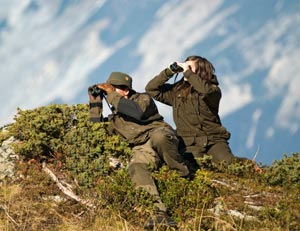
It's been our experience that binoculars which regularly retail for less than US$100 typically have inferior optics and construction. They don't provide much satisfaction for their price. If you get up into the US$200 and more range, you're getting into bird watching binoculars that will provide a good, usable view and have a reasonably durable construction.
For budgeting purposes, our counsel has ever been to simply research the available binoculars and buy the very best you can possibly afford. It may seem hard to believe, but optics actually is one of those few areas where a higher price usually really does mean higher quality.
Are you like we were when we bought our first binocular? We researched what was available carefully. We selected an instrument that was beyond our financial ability and we saved until we were able to afford it. Its lenses were on the cutting edge of optical technology at that time. Was it worth the scrimping and saving? You'd better believe it! That binocular provided us with untold hours of enjoyment and still gets used regularly!
Especially if you're considering your second or third bird watching binoculars, you may wish to ask your insurance agent to extend your homeowners' or renters' policy to specifically cover your bird watching binoculars and other optical instruments against theft, damage, or in case you should lose them.
We're adding binocular reviews as quickly as we can. If you'd like to keep up with our progress, feel free to subscribe to our site with RSS in the left column of this page.
Home > Bird Watching Binoculars

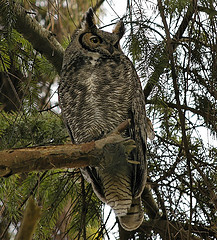
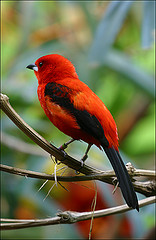
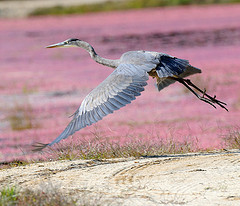
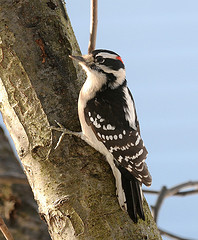


 Our Optics for Sale
Our Optics for Sale

Your Comments
This site is for you, our readers. We appreciate your comments very much.